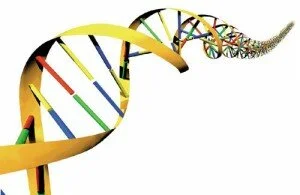 The Human Genome Project, terminated in 2003, identified more than 20,000 genes in the DNA. These sequences make up just over 1 % of the total genome. The function of all other parts, the so-called junk DNA, that is not protein-coding, was very poorly understood.
The Human Genome Project, terminated in 2003, identified more than 20,000 genes in the DNA. These sequences make up just over 1 % of the total genome. The function of all other parts, the so-called junk DNA, that is not protein-coding, was very poorly understood.
Launched as a follow-up project for the Human Genome Project, the Encyclopedia of DNA Elements (Encode) aimed to study the noncoding DNA’s biological interactions. The project’s results indicate that about 80 % of the total human genome possesses a specific biological function.
More than 400 scientists from 32 different research institutions in the UK, US, Spain, Singapore and Japan used many experimental methods, ranging from the isolation and sequencing of transcribed RNAs, studies of the modifications of histones to the identification of silent genes, to analyze the genome’s function in various cell types. Their experimental results revealed the existence of many regulatory elements – more than 70,000 promoter regions and almost 400,000 enhancer regions – in parts of the formerly called junk DNA. These regulatory elements act as switches, switching genes and protein production on and off under certain conditions.
The highly complex regulatory system can explain how the human biological complexity can be achieved with few protein-coding genes. A long-term scientific goal of this genetic research project is a better understanding of the mechanisms of genetic diseases and the development of efficient therapies.
Related Reading
Bioinformatics and Functional Genomics, 2nd Edition
Jonathan Pevsner
ISBN: 978-0-4700-8585-1
Paperback| 992 pages | April 2009
The above story is reprinted from materials provided by Encyclopedia of DNA Elements (Encode), as published on ChemistryViews.
Image Credit: http://www.vousden.name/dna.htm